Review: BlackBerry DTEK50
Aug 4, 2016, 3:30 PM by Eric M. Zeman
updated Aug 4, 2016, 3:33 PM
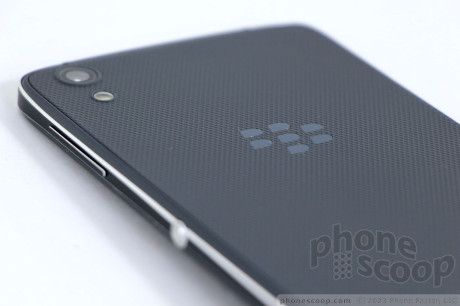
The DTEK50 runs BlackBerry's apps and services on Google's operating system and Alcatel's hardware. It's a curious collaboration of sorts that adds up to a better 'Berry. This slim Android device is everything that BlackBerry phones should have been — but never were. Here is Phonecoop's in-depth review.
Hardware
Is It Your Type?
The DTEK50 is a thin, attractive Android smartphone that includes BlackBerry's suite of business communication services. This device should appeal to style-conscious corner office types who want BlackBerry's secure messaging tools in a sleeker piece of hardware.
Body
Let's be real: BlackBerry could never have designed the DTEK50. The closest BlackBerry ever got to a phone this sleek was the 2013 Z30, and that was a bit of a beast. Now, after cutting its hardware team to the bone, BlackBerry is relying on others to design and manufacture its hardware. The DTEK50's design may have some elements dictated by BlackBerry, but Alcatel did all the legwork when it created the Idol 4, on which this is based.
The phone is pleasingly thin and light. It's black with gray and chrome accents, making it rather conservative in appearance. It fits in with the buttoned-down look common to BlackBerries. The black front panel and gray rear panel are held together by an aluminum frame, a popular design trend these days. Perhaps the biggest deviation is the use of materials: where Sony and Samsung often use glass for both the front and rear, the DTEK50 uses polycarbonate for the rear to help toughen it up. The metal frame is painted gray but has bright, polished chamfers to give it a dash of personality.
The DTEK50 has a 5.2-inch screen and the dimensions are thankfully kept in check. At 5.79 inches tall and 2.85 inches wide, it is about the same basic size as the HTC 10, though at 7.4mm thick, it is significantly thinner than the 10. I found the phone comfortable to hold and use. I had no issue reaching the entire screen with my thumb. It may be too big for those with the smallest hands, but it should work well for most people. I had no trouble slipping the phone into my pocket, but the grippy rear panel sometimes clings to your pocket interior.
The device is put together tightly. The materials, fit, and finish are all quite good. Since BlackBerry chose to replace the Idol 4's glass rear panel with polycarbonate, the DTEK50 has a more rugged stature. It feels less delicate and I think business users will find it an appealing combination of style and substance.
There are a few curious things going on with the phone's front surface. As expected, most of the face is made of glass. The bezels are acceptable thicknesses, and the display itself blends in perfectly with the glass when off. The glass panel is wrapped in a polycarbonate subframe, and the subframe is then contained within the aluminum outer frame. You can feel the rubbery texture of the subframe along the sides of the glass. The subframe thickens up between the glass and the top/bottom ends of the phone to make room for stereo speakers, which are visible only when you hold the phone close. With speakers stored in the frame, the glass itself has no cuts or slits for an earpiece. The sensor and selfie cam are visible in the black glass. The DTEK50 does not use hardware Android buttons.
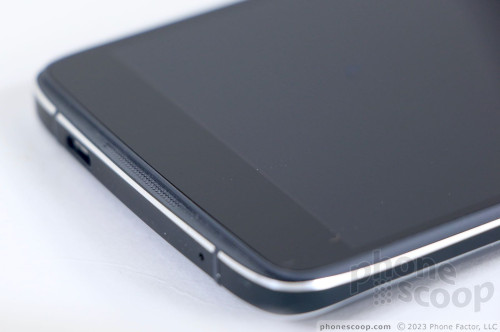
BlackBerry was unable to fix one of my biggest gripes with the Idol series, which is the placement of the screen lock button. Rather than position the key on the right edge or top, the button is near the top of the left side of the DTEK50. The button has a decent profile, though, and good travel and feedback. Chrome accents make it easy to spot.
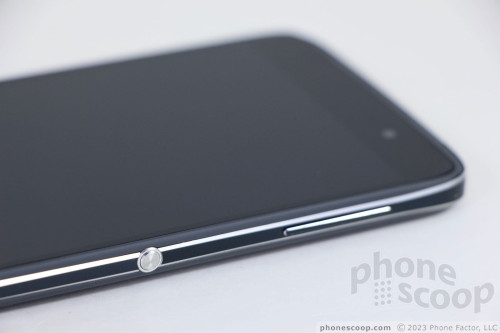
The action key on the right edge of the phone (where the screen lock button ought to be) is big, circular, and impossible to miss thanks to chrome accents. The travel and feedback on the action key is rather mushy. BlackBerry said users can program the button to open apps or even perform certain actions, such as compose emails or open the camera. That's pretty neat. The volume toggle is above the action key. It's easy enough to find with your thumb and the action is good.
You'll find the SIM / memory card tray along the right edge, as well. The microUSB port is on the bottom and the headphone jack is on top.
Similar to the front, the polycarbonate rear plate is tucked into a subframe. The material has a dimpled pattern with a soft-touch paint job to give it some grip. The DTEK50 is definitely easier to hold onto and use when compared to the Idol 4. The 13-megapixel camera and two-tone flash are tucked into the top-left corner and are flush with the surface. Like the Idol 4, the DTEK50 does not have a removable rear panel. That means the 2,610 mAh battery is stuck inside. This breaks with BlackBerry tradition and may be a dealbreaker for some.
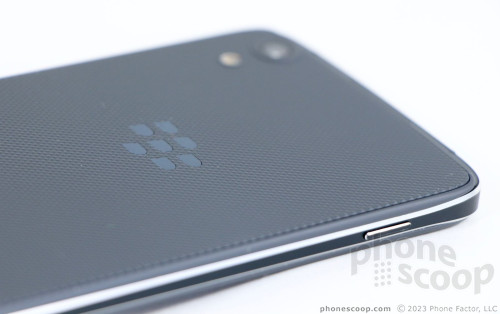
The device does not have a physical keyboard, as so many BlackBerries once did. That may be sacrilege to some, but it's progress to others.
In all, the DTEK50 is a very good piece of hardware. It's comfortable to use and is well made.
Screen
The 5.2-inch full-HD screen looks great. It's bright enough to use under direct sunlight at about 60%, but I wish it resisted fingerprints a bit better. The LCD panel offers excellent viewing angles. Text, images, icons, and web sites are sharp and free of pixelated edges. It's a fine display.
Signal
BlackBerry sells the DTEK50 unlocked. It operates on GSM/LTE networks with decent band support for AT&T and T-Mobile. It is not compatible with CDMA networks. In fact, BlackBerry said it has no plans to make a CDMA version (sorry, Sprint and Verizon users!)
I tested the DTEK50 on AT&T's network around the New York City area and found it to perform about average when compared to other AT&T phones. The phone was connected to LTE the majority of the time, but did rip to 3G on occasion. I didn't have any trouble making calls, which connected in strong and weak coverage areas alike. The phone did drop one call at highway speeds and missed one call that went directly to voicemail. Data speeds were decent, but far from eye-popping. Social networks such as Facebook and Instagram were speedy enough, but video was often slow to play. Spotify and YouTube both experienced small delays and hiccups when streaming over the network.
Sound
The DTEK50 is a little uneven when it comes to call quality. The earpiece speaker produces enough volume to be heard in most places, but the quality of the sound is thin and shrill. You can probably conduct calls at home, the office, and in the car without problem, but busy city streets or noisy coffee shops may be too much. People I spoke to through the DTEK50 said I sounded tiny.
The speakerphone is much worse. Neither volume nor clarity is any good. You can hold a conversation at home or the office but not in the car or a busy airport. Moreover, voices sound like they're burping through mud. I'm pretty shocked at the poor quality.
Ringers and alerts tones are okay but not great. The vibrate alert is strong enough that you'll feel the phone ring when it's in your pocket.
The phone has stereo speakers that pump out 3.6W of sound each. They are very loud, but not quite as good as the speakers on the larger Idol 4S. Quality is good enough that you can probably skip using a Bluetooth speaker in small quarters.
Battery
BlackBerry says the 2,610 mAh battery delivers 17 hours of continuous mixed use. That means the phone can function with the screen on and run a variety of apps (email, music, camera, video, social networking) for a full waking day without taking a break. BlackBerry's claims are on point. The phone typically pushed from 7am to Midnight with plenty of power to spare (~30%) with intermittent-but-heavy use. In other words, the screen wasn't on the entire time, but I used the phone a lot throughout the day.
The device includes the Android battery saver tool for managing battery life when needed.
Thanks to Quick Charge 2.0, the DTEK50 can ingest a 20% charge in just 10 minutes. The phone does not ship with a rapid charger. You'll need to get your own. Boo.
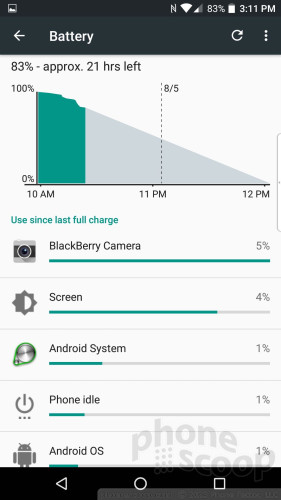
Bluetooth, GPS, NFC, WiFi
All of the DTEK50's secondary radios functioned as they should. The Bluetooth radio was easy to pair/connect to other devices, including PCs, headsets, speakers, and my car. Call quality was pretty decent through a standard headset, but darned awful through my car's hands-free system. Music sounded decent when pushed to Bluetooth speakers, but you may be better off relying on the DTEK's speakers.
I was able to use the phone's NFC radio to aid in pairing with some of the accessories mentioned above. The NFC radio also supports Android Pay for mobile payments.
The DTEK50's GPS radio is quick and accurate. It located me in a blink and was often as accurate as 10 feet. The radio worked well with Google Maps, and the DTEK functioned as a real-time navigation device quite effectively.
I found WiFi performance to be excellent.
Software
Lock Screen
Blackberry added some useful stuff to the DTEK50's lock screen with respect to notifications.
Similar to other "active displays," the DTEK50 will turn on the screen when new emails, messages, or BBMs arrive. Rather than wake the device fully, however, it displays white text on the black screen in order to reduce power consumption. It will show the latest arrivals and the clock on the display for about 5 seconds before blinking off again. Samsung, LG, and Motorola devices do much the same thing.
Like most Android handsets, you can see who sent the email/message, the subject line and/or first line of the missive on the lock screen. You may also choose more basic notifications that don't include such sensitive details. Alternately, you can turn off most notifications entirely.
If you press the screen lock button, the screen wakes fully and shows much the same information. If you've set up any sort of security, you have to unlock the phone before you can act upon notifications. The DTEK50 will let you open the Quick Settings shade without requiring your passcode.
BlackBerry skipped a fingerprint reader for the DTEK50 and the reasons are sort of interesting. First, cost. BlackBerry wanted to keep the phone's price as low as possible and a fingerprint sensor would have added to the price. Second, security. Yes, you read that correctly. BlackBerry's claims that its business customers have, by and large, not yet implemented IT policies with respect to fingerprint readers and often deactivate them. Many businesses supposedly would rather not have them on the phone at all, so BlackBerry decided to drop it.
Home Screens
BlackBerry's launcher resembles the stock Android 6 experience, but tosses in a handful of useful functions for managing widgets and select apps.
Aside from several BlackBerry app icons and shortcuts on the home screen panels, you'd never guess this phone came from BlackBerry. Three panels are active out of the box, but you can add or subtract panels at will. I like the widget for BBM, which lets you pin your inbox or individual conversations to the home screens. The drop down Quick Settings panel and full system settings menus are completely stock Android.
The first of the dedicated BlackBerry tools is the BlackBerry Tab. It functions a lot like the Edge UX on Samsung's Edge-branded Galaxy phones. The tab is accessed through a small tab that appears along the side edge of the screen. The tab is available from most apps, save for special cases such as the camera. Users can set it to appear on the left or right side, control how tall it is, and dial in their preferred level of transparency. The tab offers a quick view of your more essential communication tools. It has four main functions: it lets you see your schedule, view messages, view tasks, and reach your favorite contacts. You can also remove the tab entirely.
Then there are the widgets. BlackBerry has taken an interesting approach to widgets all in the name of security. Widgets, says BlackBerry, often contain sensitive information, such as calendar data, SMS conversations, or email threads. Not everyone cares to have those details plainly visible on their screen all the time. Therefore, BlackBerry has given the DTEK50 “hidden widgets”. Apps that support widgets are signified with three small dots under the shortcut on the home screen. Swipe up on the shortcut, and the corresponding widget will open, allowing users to see their next calendar appointment or whatever. It's a neat idea that tidies up the home screen while still allowing widgets to be useful.
BlackBerry Hub rounds out the Blackberry-specific offering. This app was carried over from the BlackBerry 10 OS, and serves as a master inbox for managing all sorts of communications. The BlackBerry Hub lets users drill down into their call log, SMS inbox, BBM account, and email in more depth. Users can snooze notifications for individual accounts, or easily sort between unread, flagged, muted, and high-importance conversations. It offers an extensive number of settings for creating custom alerts, as well as prioritizing inbound messages and fine-tuning the exact appearance of emails. It also handles social media accounts, including Facebook, LinkedIn, Twitter, WhatsApp, Instagram, and more.
The Hub has its own home screen swiping gesture that's easy to master. Simply swipe up from the bottom of the screen and three giant shortcuts appear to the phone, inbox, or search tools (default). Users can customize which apps or functions are opened by this gesture.
The DTEK50 does not support a reversible user interface, like the Idol 4.
With a Snapdragon 617 and 3 GB of RAM under the hood, the DTEK50 has an adequate amount of power for most tasks, but it felt sluggish at times. App updates were slow to install, and some games seemed to tax the processor. Core apps such as BlackBerry Hub and Google Maps ran just fine.
Camera
The DTEK50 does not have a dedicated camera button, but you can choose to assign the user-programmable action key to launch the camera. Stupidly, the action key only works when the phone is already awake and unlocked. You may alternately open the camera from the lock screen shortcut.
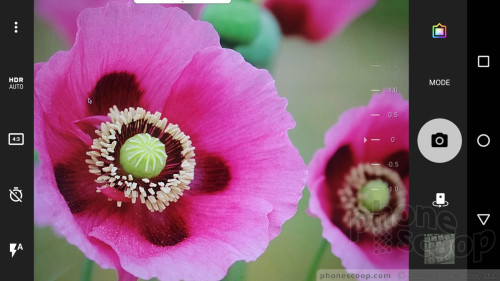
Basic tools line the side of the camera viewfinder. These include controls for the flash and HDR — both of which have “auto” settings — as well as the timer and full settings. On the right, you can switch shooting modes (camera, panorama, video) and apply filters (Sepia, B&W.) A handy slider tool near the shutter button allows for quickly adjusting exposure (brightness) on the fly. The selfie camera and camera roll are both accessible below the shutter button.
The in-depth settings are rather limited. For example, you can choose from several aspect ratios, but not photo resolution. You'll get the full pixel count if you use the 4:3 aspect ratio, but 1:1 and 16:9 crop the the image to achieve the ratio. You can turn also add grid lines to the camera and location tags to photos. The DTEK50 allows you to tweak the video capture resolution and frame rate.
New to the BlackBerry camera app is a full manual mode. As the name implies, it lets you control exposure, ISO, shutter speed, white balance, and focus. The longest-possible exposure is 1/2 second. Each aspect is easy to control thanks to onscreen sliders that come and go when needed.
My favorite setting is a toggle that says "focus before capturing image." The description explains that the camera won't release the shutter until the subject is in focus and "will slow down" the process. I flipped this switch on and didn't see an appreciable increase in the relatively short time the DTEK50 needs to focus and snap the shutter.
Photos/Video
Alcatel gave this phone a 13-megapixel camera and BlackBerry's software is able to put it to good use. I found the majority of images to be decent, but there were plenty of outliers. You can see grain in some of the sky pictures and wacky white balance in the brick and stones. The DTEK50 wasn't able to focus on a close-up of the purple flowers, but did fine with the white flower. None of the results are truly awful and most issues can be resolved with some simple edits. The one issue I did notice was slower focusing times and poorer exposure when shooting in low light.
The user-facing camera snags 8-megapixel images and does a decent job. The sample below is in focus, has proper white balance, and good-enough exposure.
The phone can shoot video at max resolution of 1080p at several frame rates. I was generally pleased with the results, which showed good focus, color, and exposure.
I'd say most people will be happy to use the DTEK50 for everyday photo and video needs. It can handle most ordinary shooting environments.
BlackBerry Apps/Services
BlackBerry Hub and BBM are the two main user-facing tools available on the DTEK50, but the DTEK app is what gave the device its name. DTEK quickly assesses the DTEK50's security settings and lets you know if you need to take additional steps to secure the handset. For example, before I set a screen lock for the phone it returned a result of "inadequate". Once I added the lock, the device's security status improved to "fair". BlackBerry thought my pattern was too weak. Using a more complex pattern put the DTEK50's security status in the "excellent" range. Samsung has a similar tool on the new Galaxy Note7.
DTEK is probably useless for most people. As long as you have a decently strong password protecting the phone, you've done enough. This should be common sense by now. DTEK will matter more to business customers. Enabling the mobile device management tools via BES will give IT all the control and security it requires to ensure employees aren't putting company data as risk with poor lock patterns, etc.
The device search tool is pretty good. It's great for finding specific messages in BlackBerry Hub. It scans the entire hub, making it ideal when you can't remember if the phone number you need is in an email, text, or IM message.
Wrap-Up
The DTEK50 from BlackBerry delivers a very good experience for the money. At $299, it's less than half the cost of the BlackBerry Priv and comes in a more aesthetically appealing package. The DTEK50 is slim, light, and easy on the eyes. Originally designed by Alcatel as the Idol 4, BlackBerry made the device its own thanks in part to the polycarbonate rear shell and BlackBerry software.
You'll find the DTEK50 nails most of the basics. It features a good screen, solid wireless performance, and excellent battery life. Some may dislike the sealed battery, but support for memory cards is a bonus. Phone calls are a weak point. The speakerphone — an important business tool for some — is particularly bad. The Android user interface is easy to manage, and BlackBerry's additions make the DTEK50 feel more like an enterprise-grade device.
The camera app is a step up from the Priv's and delivers more consistent results. The stereo speakers are nice to have, but some may complain about the lack of fingerprint reader.
BlackBerry is selling this phone unlocked for just three Benjamins. The DTEK50 is an excellent value for all the phone offers. It may not be the BlackBerry of yore, but it could be the BlackBerry for your corps.

Comments
No messages


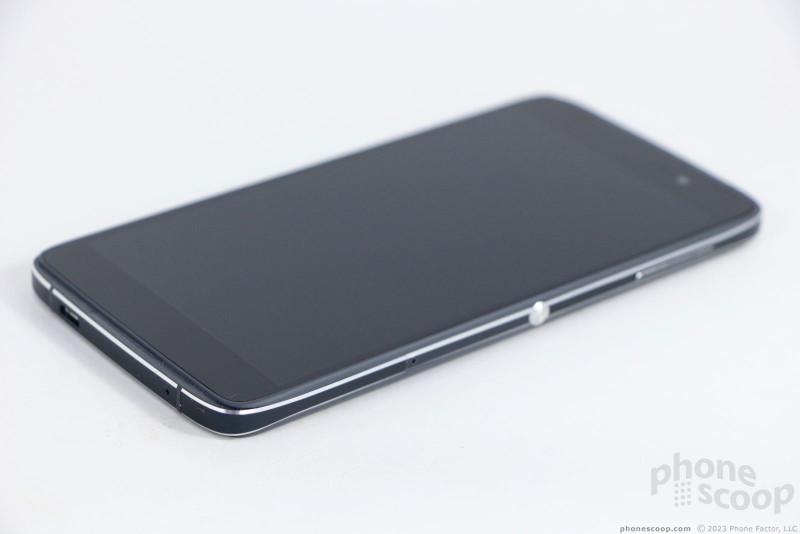
















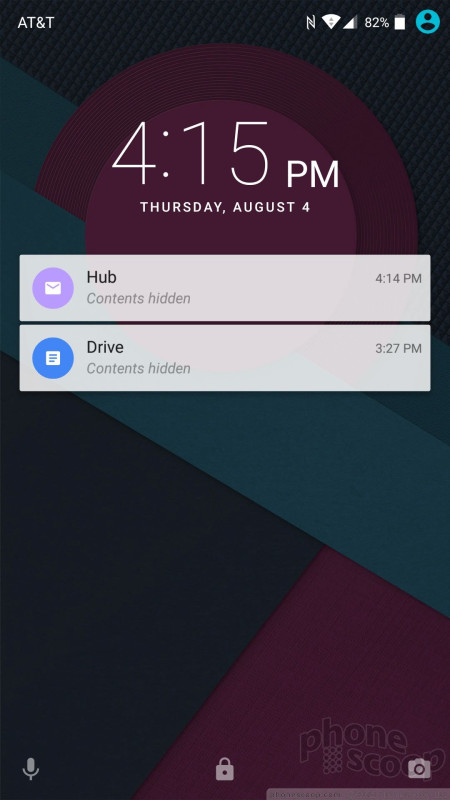




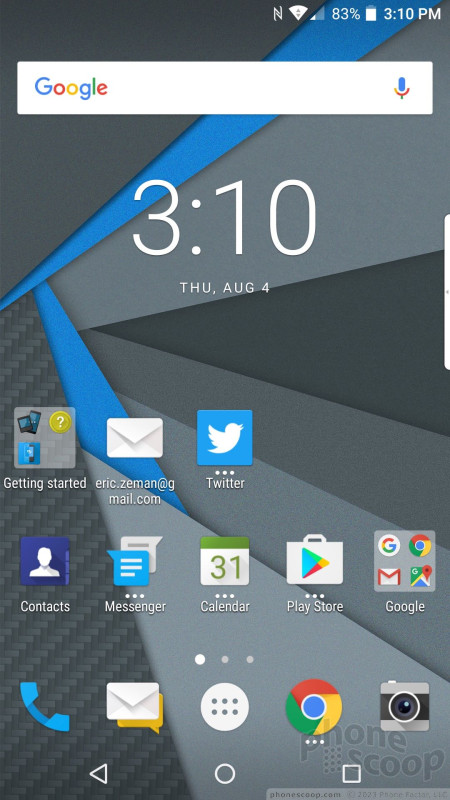










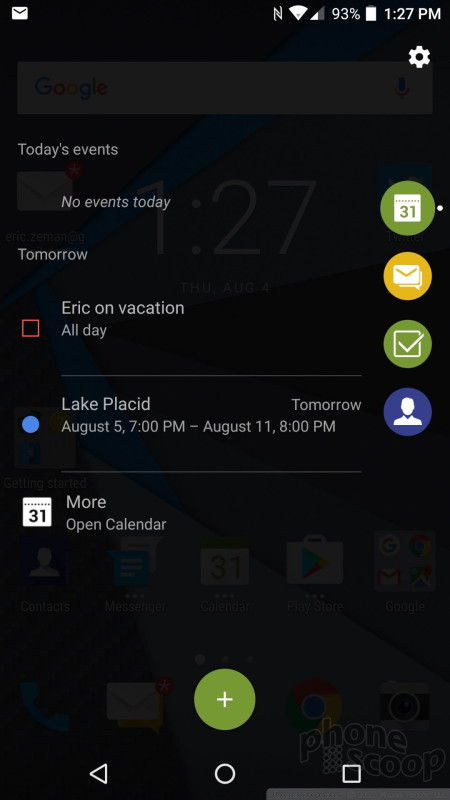




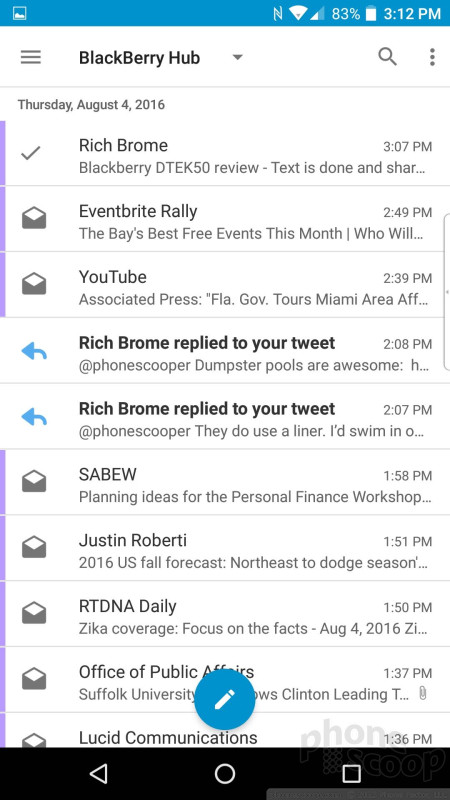





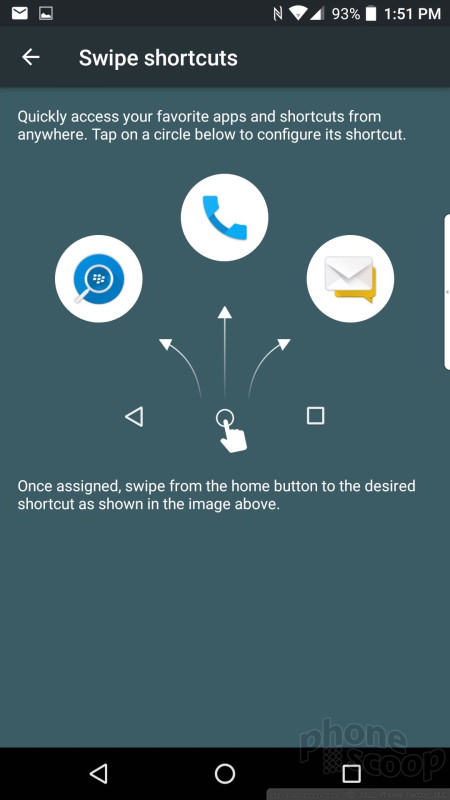



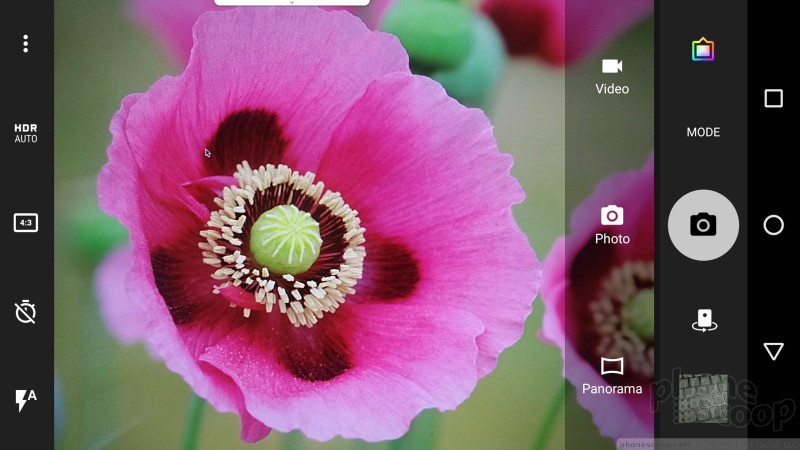






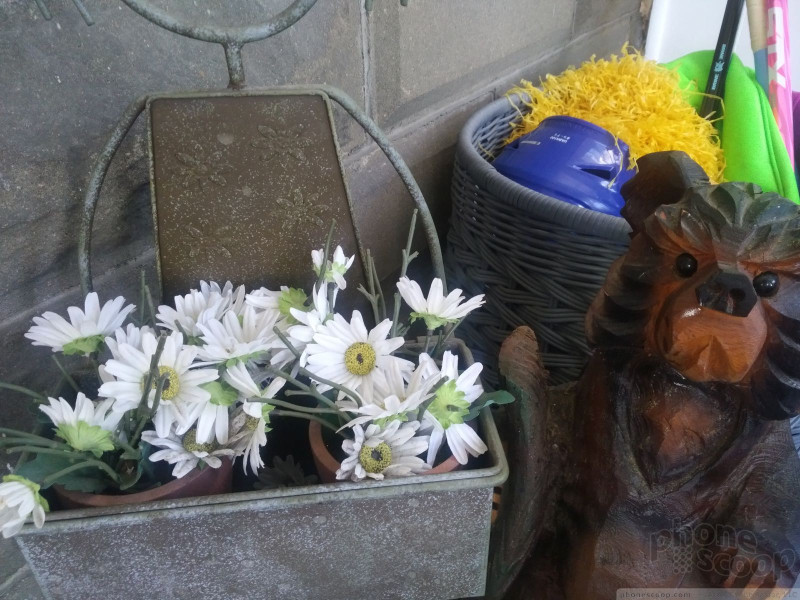



















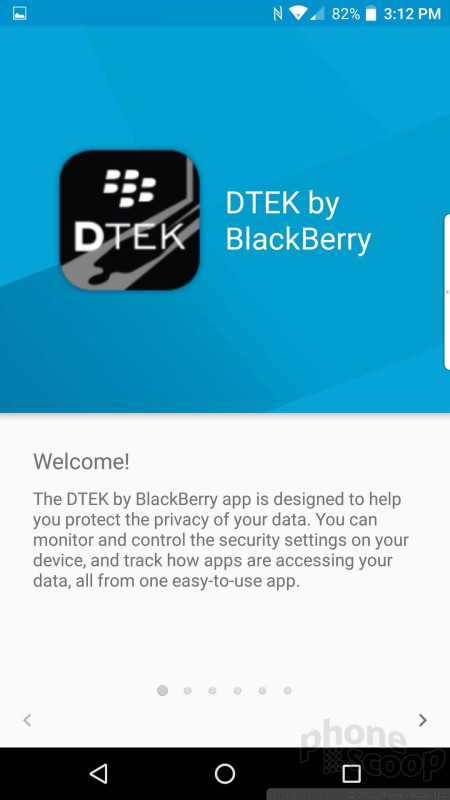




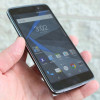 Hands-On with the BlackBerry DTEK50
Hands-On with the BlackBerry DTEK50
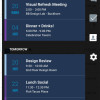 BlackBerry Overhauls Productivity Tab for Android
BlackBerry Overhauls Productivity Tab for Android
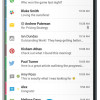 BlackBerry Expands Hub+ to More Android Phones
BlackBerry Expands Hub+ to More Android Phones
 BlackBerry Delivers Significant Update to Priv and DTEK50
BlackBerry Delivers Significant Update to Priv and DTEK50
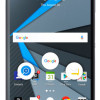 BlackBerry DTEK50 Is A Secured, Rebadged Alcatel Idol 4
BlackBerry DTEK50 Is A Secured, Rebadged Alcatel Idol 4
 BlackBerry DTEK50
BlackBerry DTEK50











